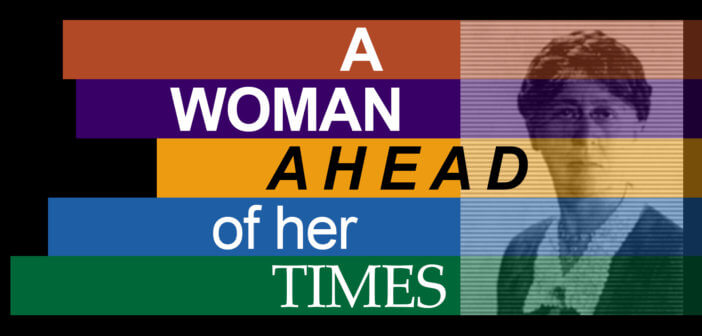Lovett H. Weems Jr. explains how Mary Parker Follett, a pioneering leadership thinker who valued human interaction and interconnectivity, influenced his thinking on key leadership themes such as vision, collaboration, and reconciliation.
Mary Parker Follett (1868-1933) was ahead of her time. Her life was that of a pioneer and, perhaps more importantly, her ideas were and continue to be groundbreaking. She was taken seriously as a writer, lecturer, and thinker long before this was common for a woman. She published two remarkable books on government before she had the right to vote. She studied at Radcliffe College (then known as “The Harvard Annex for Women”). As a Radcliffe student, she spent a year at Newnham College, University of Cambridge, where she read history, law, and political science.
A basic principle for her was that every human interaction, from the seemingly most common and insignificant to the most profound, should be cultivated for its potential learning and creativity. Therefore, she talked to people everywhere — bus conductors, maids, factory workers — anyone whose experience could provide insight into the nature of the social process. She won the confidence of those with whom she came into contact and to whom she listened with keen attention.
She was also an activist who worked as a social worker and community organizer in Boston for two decades. Her interest next centered on the possibilities of vocational guidance, which afforded her valuable contact with business leaders. At this time, she shifted her main interest from political and social issues to problems of industrial relations.
Mary Parker Follett had broad interests so that her thoughts and influence have ranged beyond any one field. She is remembered and admired by people engaged in the fields of psychology, sociology, political science, and business administration, plus many others who see implications for their work in her principles. Though her ideas were innovative and genuinely ahead of her time, she was not known as a particularly original thinker. Her genius was to put existing ideas together in ways that no one had thought of before. Her gift was not so much originality as creative synthesis.
I discovered her quite by accident many years ago in a footnote. Despite the passage of time, I found many of her ideas relevant to church leadership today. Here are three examples of her ideas that have influenced my leadership and writing.
1. Vision is the “invisible leader.”
It is the shared vision that becomes the “invisible leader” of an organization. A traditional understanding sees an organization as a pyramid in which the leader or leaders at the top decide what needs to be done, and everyone below accomplishes what has been decided. She proposed that an organization be seen as an inverted pyramid. At the top of the inverted pyramid is the vision as the invisible leader. Everyone else finds a place within the pyramid. Leaders are at the bottom of the inverted pyramid and their primary task is keeping everyone within the organization focused on the vision and faithful to it.
In the inverted pyramid paradigm, everyone in every group can truly say, “We can have only one leader.” However, the leader commanding the loyalty of everyone is the invisible leader of the common purpose. Plans and differences are all settled by the single standard of the shared vision. Follett believed that loyalty to this invisible leader gives a group the strongest possible bond of union.
2. Leadership emerges from different people at different times in different ways.
Mary Parker Follett lived in an era that spoke of “born leaders.” Her experience did not justify the use of that term. She found that leadership within groups is not fixed in the hands of only a few. Rather she observed that different people were leading at different times and in different ways. She called this multiple leadership. In our time Max De Pree used the term “roving leadership” to point to this reality, and theologian Letty Russell called it “temporary inequality.”
Think of multiple leadership as a dynamic and fluid understanding of leadership. Leadership emerges from different people at different times in different ways. Leadership tasks are not allocated in a rigid or arbitrary way that makes someone always a leader and makes someone else always a follower. Indeed, someone may assume the roles of leader, follower, and peer depending on the nature of the tasks undertaken. Multiple leadership is a creative way of people working together as needed and appropriate to accomplish a shared vision.
3. Compromise is not always the best way forward.
Follett shared with John Wesley the belief that truth does not lie in a compromise solution between two sides. She thought the greatest deficiency of compromise is that there is no real change in one’s own thinking. She warned against “sham reconciliation” and believed each side must persist until a way is found by which both sides can contribute to the solution.
One of the great advantages of finding solutions through integration is the personal change that takes place. We come to understand and appreciate the ideas and values of others. Give your difference, welcome my difference, unify all difference in the larger whole — such is the law of growth that she advocated. Follett put it this way, “Our opponents are our co-creators, for they have something to give which we have not. The basis of all cooperative activity is integrated diversity.”
Related Resources
- Discovering God’s Future for Your Church Video Tool Kit
- Women Speak of God, an adult Christian study resource
- Mary Parker Follett, American Sociologist, Encyclopaedia Britannica






